|
|
 |
Peru,
The Ausangate peak |
|
The journey to the Ausangate
peak was a 14-day trek including a 4-day climb of the Ausangate peak for a 24-day stay.
The trek was made in four parts. The first part was devoted to the acclimatization
on the "Inca Trail" to Machu Picchu. The second part was an approach walk.
The third was the climb attempt of Ausangate peak, 6,380m high. The last part was
the return phase. The trek was a tour from the west around the Ausangate peak.
The group was composed of five travellers
including a woman and a high mountain guide.
The trek was made in 1998, from July 31
to August 23. After an Avianca flight via Bogotá and Quito, the arrival in Lima was late.
The report is in six tables.
The general comments are given by the
Peru presentation. |
|
|
|
|
Lima, Cuzco |
|
|
|
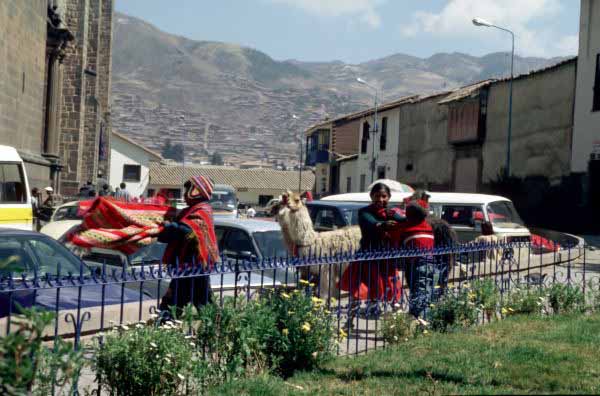 |
|
Cuzco |
|
|
Approach: The flight to Lima took off with one hour and a half's delay.
After the Bogotá and Quito stopovers, the arrival in Lima was only 45 minutes late.
Lima was only a one night stop before taking the Aeroperu plane to Cuzco at daybreak.
Lima was visited on the way back,
Lima.
Cuzco, 3,284m high: The arrival was in the early morning. After checking
in the hotel, the visit of the city and surroundings started from the Plaza de Armas
according to the traditional tour in two days. The previous journey in Peru gave a
Cuzco visit report.
Excursion of the Inca Sacred Valley: It is the traditional visit of any
trip in the Cuzco area. I saw again with pleasure,
Pisac and Ollantaytambo sites I had visited thirteen years before.
|
|
|
|
|
|
A bus took us to the Chilca village at km 88 of the railway line from Cuzco
to Machu Picchu. It is the departure of a four-day trek to visit the
Machu Picchu site and to also be used as quiet acclimatization.>
|
|
|
|
|
From Km 88 to Machu Picchu |
|
|
|
|
Approach: The group fell into line behind the guide who gave the pace
for the first acclimatization days. This first part of the trek, on "the Inca
Trail", lasted four days with an intense heat in sublime sceneries.
Wayllabamba: It was a 6-hour walk in the Vilcabamba cordillera area.
The ascent was stiff to reach the ruins of the fortress which defended the
Llactapata site.
Pacay Mayo: The first hours were devoted to the rise of the Warmiwanunca
pass, 4,150m high in a tropical forest. The walk lasted approximately 6 H.
Winay Wayna: A long day full of history with the ascent of the Runcuracay
pass crossing historic sites and offering exceptional panoramas. The walk lasted approximately
7-hours on a track often paved for the "Mails of the Inca".
Machu Picchu: The site was visited at the time of the previous journey, nothing had
changed. However it seemed to me there were more tourists at the
Machu Picchu. The site will always remain a source of amazement:
It shows man's genius for civil, religious and military construction. |
|
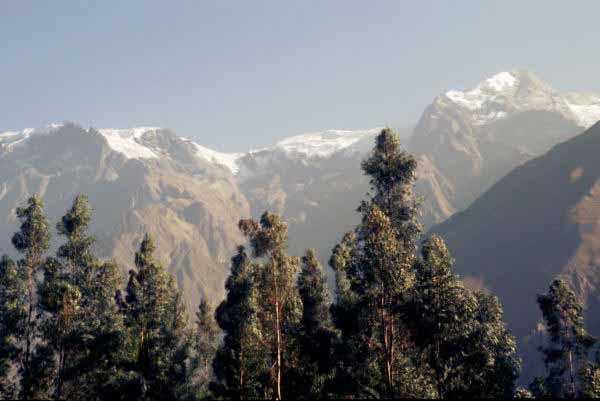 |
|
Scenery |
 |
| Machu Picchu |
|
|
|
|
|
|
The return to Cuzco allowed us to have a feel wash after the heat and
dusty tracks. A rest day was used to supplement the visit of this
exceptional city. A one-day bus ride was required to go to Tinki,
3,900m high, the approach trek departure base. The lunch pause was in
Ocongate, a charming Indian village.
|
|
|
|
|
From Tinki to the Ausangate base camp |
|
|
|
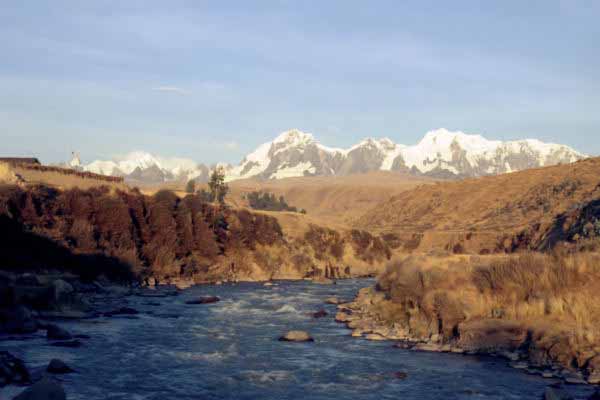 |
|
Altiplano |
 |
| Red Lake |
|
|
Approach:
After the Inca Trail in a tropical forest of Peruvian Selva, the trek was
in the Altiplano empty space, a three-day walk to reach the base camp of Ausangate
peak.
The geography of this area is disconcerting.
Upis, 4,050m
high: The approximately 5-hour walk took place in a dramatic
scenery. Two halts were made in the progress to rest close to hot
water springs. A fine rain fell as we set up the camp. In the early
morning, the countryside was covered with white frost and the brooks
had iced over. During the day, when the sun shone, the walk was made
in light clothes.
Large Red Lake,
4,600m high: This stage was characterized by the ascent of a pass
covered with sand brought by the wind. It gives a lunar and Sahara-type
landscape. The camp was set up, after a 5-hour walk, on
the bank of the lake Jatunpucacocha, in which the Ausangate
glacier plunges. The place was very windy. The temperature under the
tent in the early morning was 3°C only.
Base camp,
4,600m high: On a beautiful day, the trek took the path of the glacier
southern face and crossed two passes, one 4,800m and the other +5,000m
high. The camp was set up in a mountain pasture in llama, alpaca and sheep company.
The trip was made in 5 hours walk in a pleasant temperature and in a dramatic
scenery. |
|
|
|
|
|
This part of the trek constituted the end of the acclimatization in marvellous
landscapes with a very beautiful light due to the temperature and the intense
cold during the night. Hot springs were convivial moment of relaxation.
The support team was made up of three people and mules, actually
horses, for the luggage, kitchen tools and food portage.
|
|
|
|
|
The ascent of Ausangate |
|
|
|
|
Approach: The
trek took the form of an expedition. The challenge was to set up an
altitude camp, which was the starting base of the final attack, for
the attempt to reach the summit.
Intermediate camp:
The camp was set up about 5,450m high on a glacial tongue.
The target consisted in walking up with the ascent material and the
food necessary for two days. The portage load for everybody was
heavy, making the climb slow and tiring. The return to the base camp
was faster.
The second rise to the intermediate camp took same time as the
first, the load consisted in personal clothes and sleeping equipment,
mattress and sleeping bag. The night was short and uncomfortable because
of the cold of the glacier.
Rise the rise
was in three stages. The first was a trail with no
difficulty on moraines which went up to the foot of a
snow-covered slope, 5,700m high. The second was a
progress on a stiff slope requiring the installation of a fixed
rope by the high mountain guide. The snow layer hid an under layer not
supporting the pins of rope fixing. The guide decided to give up the race
towards the top not to endanger his group.
Any ascent is subjected to climatic risks making the target uncertain.
Return: The
return to the intermediate camp was made in impressive silence and
we did not stop before we reached the base camp with the material
carried up twice. However the support team had joined us to help us
to carry down the material. |
|
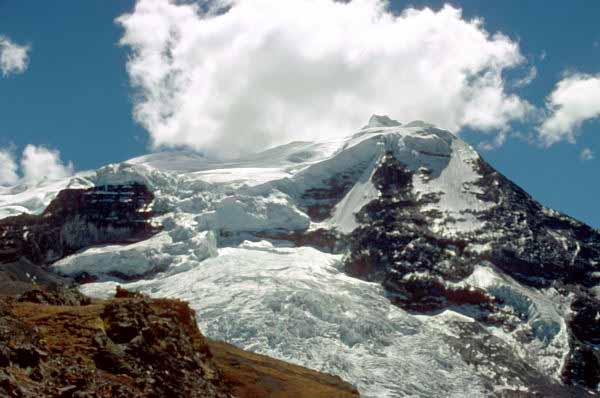 |
|
Ausangate
|
 |
| Ausangate |
|
|
|
|
|
|
The failure of the ascent was the consequence of the
sunny exposure of the glacier and the planet warming. Indeed there, like
elsewhere, "Local people" note that "the glacier moves back".
This phenomenon is also noted in the French Alps.
For our high mountain guide, the alternative would be either to find
another climb way or to fix other dates in the year.
|
|
|
|
|
From the Ausangate base camp to Tinki |
|
|
|
 |
|
Ticclacocha
|
 |
|
"Pénitents"
|
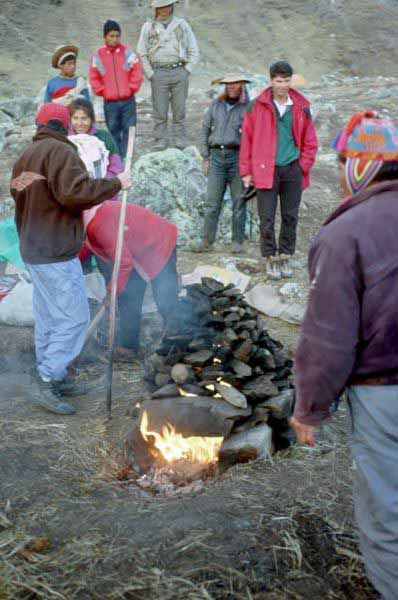 |
| Pacchanta |
|
|
Approach:
The return to Tinki to find the vehicles skirted round the Ausangate
peak by the east. Not climbing the Ausangate peak gave one more day which
was taken for a climb not scheduled by the program, as mental compensation.
Ticclacocha,
4,800m high: The trail went by the Finaya hacienda and its
llama mountain pastures. The houses we visited had shelters in the shape
of towers to store the domestic animal dung used for heating during the winter.
We observed many birds and rodents, Viscachas. The panorama on "Cordillera
Vilcanota" was exceptional.
Lake Azulcocha,
4,600 high: That day was devoted to the ascent of a small summit on our
way approximately 5,500m high. The ascent was a slalom
between "penitents", a Peruvian specialty. They are
small sharp-edged heaps of ice brought by the wind. They made
the progress slow and painful, more particularly in the descent.
The technicality of the course required the equipment of high
mountain, cross-belt, rope, ice axe and cramps. The panorama from the
top was splendid, a 360° vision. The last part of the track
towards the camp was made difficult by the dust wind going up the
valley. It was a 7-hour walk that we all enjoyed.
Pacchanta,
4,300m high: That day was short. The trip towards the camp
followed a moraine ridge then a path through apple trees. It
finished in a swimming pool with spring water 60°C hot. The
dinner was an Altiplano Peruvian specialty, a "Pachamanca".
Stones are white heated in a hearth by llama dung. Then
potatoes are put in the ashes covered with hot stones covered with llama
and sheep meat and with herbs in successive layers with the white heated
stones. The whole cooks a for approximately two hours. It was delicious.
Tinki, 3,900m high:
The next morning started with a bath in the vapour covered swimming
pool due to the temperature difference between water, 40°C and
outside, approximately 5°C. The way towards Tinki took 3 hours.
The landscapes were for one third rubbles and moraines,
then two thirds of eroded mountains. It was al rather dusty.
After lunch, the trip towards Cuzco was a 5-hour bus ride on mountain
trails through mountain pasture villages. |
|
|
In spite of my disappointment not to have been able to try the climb of
the Ausangate peak, I considered that it was an extraordinary trek in one of the
most splendid areas in the world with a interesting past and present civilization.
|
|
|
|
|
Cuzco, Lima |
|
|
|
|
Approach: We took
the same way back, on a bus to Cuzco then by plane to Lima.
Cuzco: The return to
Cuzco after the Ausangate trek allowed an extra half-day visit before
taking the plane to Lima.
Lima: The city
was visited very superficially, a walk to Plaza de Armas and a visit
to Oro del Peru museum.
Lima has already been commented on. |
|
 |
|
Cuzco |
|
|
|
|
|
|
The second journey to Peru was centred on the ascent of the Ausangate peak,
tourist visits were fast, but sufficient to recall my previous journey in 1985.
|
|
|
|
|
The return to France was made by an Avianca flight via Quito and Bogotá then to Paris.
|
|
|
|
| Neuilly, le 2003/09/20 |
|
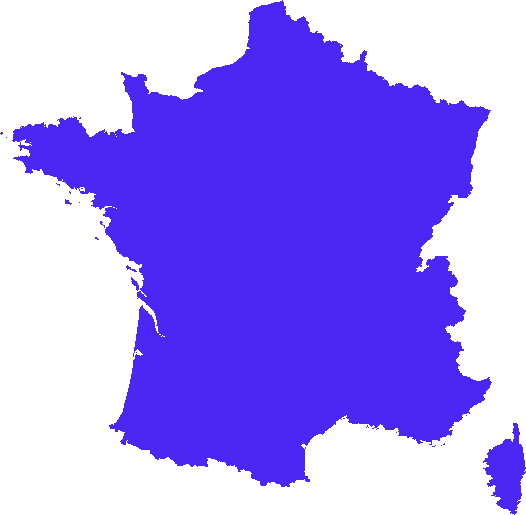
|
|
|
|
|